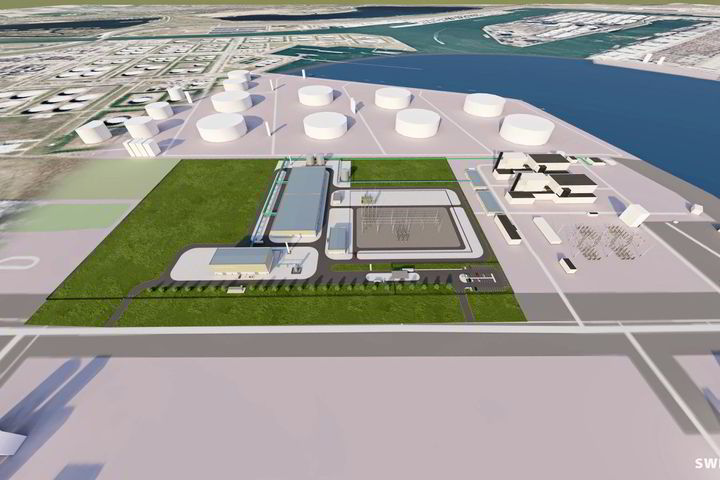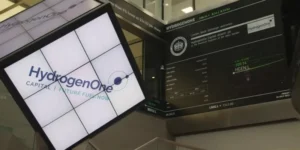Dutch utility unveils plans for 800MW green hydrogen complex at Port of Rotterdam

Dutch utility Eneco has submitted a planning application for a 800MW green hydrogen complex at the Port of Rotterdam via its Eneco Diamond Hydrogen joint venture with Japanese conglomerate Mitsubishi.
Eneco, which is 80% owned by Mitsubishi itself, plans to co-locate the electrolyser project with its Enecogen gas-fired power plant, with the aim of sharing common infrastructure between the two facilities, such as grid connection, water access, and office space.
The green hydrogen plant is expected to start producing H2 in 2029, with construction scheduled to begin in 2026.
“We will target industrial companies in the area initially,” a spokesperson for Eneco told Hydrogen Insight, adding that “there are a lot of hydrogen users in the Port of Rotterdam”.
Volumes from many of the renewable H2 projects under development in Rotterdam—such as Shell’s Holland Hydrogen 1 complex or HyCC’s H2ermes and H2-Fifty—are expected to displace incumbent grey hydrogen produced from fossil gas without carbon capture, or be used for direct iron reduction in local steel mills.
And while state-owned gas transmission system operator Gasunie last month started the construction of the first stretch of a pipeline network stretching throughout the Netherlands and into Germany, the initial 30km will actually link up the Port of Rotterdam’s Maasvlakte 2 development to the Pernis industrial neighbourhood in Rotterdam.
Article continues below the advert
Eneco declined to comment on whether it would seek government funding for project capex, or seek subsidies to cover the cost gap between green hydrogen produced at the 800MW facility and grey H2, via auctions such as H2Global or the European Hydrogen Bank.
However, the project is due to start up a year before the EU’s target mandating that 42% of industrial hydrogen use should be renewable by 2030.
Member states are also in the process of transposing these targets to national law, which could mean extra state-level incentives or penalties to drive sectors to commit to enough green H2 offtake to meet this target.






